Cybersecurity in industrial electronics and automation technology: Comprehensive strategies to protect against cyber threats
The security of industrial electronic systems is crucial today. In addition to proven measures, the integration of security by design principles into automation technology plays a key role. From zero trust models to SIEM solutions, a comprehensive security strategy is critical to protecting against cyber threats. In this detailed blog post, we take an even closer look at security in automation technology.

In an era where industrial electronic systems are increasingly digitized and interconnected, security is becoming a critical factor. Cyber threats can lead not only to operational failures, but also to significant financial damage and the loss of sensitive data. Therefore, it is critical that companies proactively develop strategies to protect their industrial electronics systems from potential cyberattacks.
1. Employee awareness and training: Strengthen the human firewall
The No. 1 weak point in any security system is often the people behind it. Therefore, it is essential to make employees aware of potential cyber threats. Regular training should not only highlight the latest threats, but also provide best practices for working safely. Strengthening the “human firewall” is a cost-effective but effective approach to risk reduction.
A targeted training program should focus not only on identifying phishing attacks, but also on understanding the importance of strong passwords, using USB devices safely, and detecting suspicious activity on the network. Industry-specific scenarios from industrial automation technology can be incorporated to illustrate the relevance of the training for everyday work.

2. Network segmentation and access control: Restrict access
Network segmentation is an effective measure to limit the scope of a successful attack. By dividing the network into closed segments, the spread of malware is made much more difficult. Access controls should also ensure that only authorized users can access specific parts of the system.
This protection mechanism allows only a limited area of the system to be affected in the event of an attack, minimizing damage and shortening recovery time. In automation technology, special segments can be set up for production lines or control systems to ensure targeted isolation. An in-depth analysis of the different automation levels (e.g. field level, control level, management level) can help to plan specific protective measures.

3. Regular updates and patch management: The foundation of security
Unpatched software and outdated systems are open invitations for cybercriminals. Strict patch management, including regular updates and security audits, is critical. Companies should ensure that their systems are always up to date to address potential vulnerabilities.
Implementing an automated patch management system makes it easier for companies to ensure that all systems are updated regularly and in a timely manner. This minimizes the risk of attacks through already fixed security holes. When planning patch management, differentiated approaches for different device types (e.g., sensors, actuators, controllers) can be taken into account.

4. Firewalls and Intrusion Detection Systems (IDS): The Guardians of Security
Firewalls and IDSs are like watchdogs that monitor the network 24/7. Firewalls monitor traffic and prevent unauthorized access, while IDSs can detect and alert anomalies in network behavior. The integration of these technologies creates a robust line of defense against cyber threats.
Firewalls should not only work at the network level, but also at the application level to detect and block specific application attacks. Intrusion detection systems can detect anomalies and suspicious behavior by analyzing network traffic, enabling early warning. In automation technology, special firewalls can be implemented at industrial network levels to monitor communication between control systems. The integration of AI-powered IDS systems can further improve the detection of previously unknown threats.

5. Encryption of data: The protective shield for sensitive information
Data encryption is critical not only in transit, but also at rest. Encrypting data ensures that even if the system is successfully attacked, no sensitive information is revealed. This is particularly important in industries where protecting trade secrets and sensitive customer data is a top priority.
Selecting strong encryption algorithms and regularly checking implementation are essential to ensure effective protection of sensitive data. In automation technology, the encryption of control commands and data is of great importance in order to prevent manipulation by third parties. Special protocols such as OPC UA with integrated encryption can also play a role here.

6. Monitoring and Incident Response Plan: Respond quickly to threats
Continuous monitoring of networks and systems is crucial to detect anomalies at an early stage. Not only detection, but also a quick reaction is crucial. A well-developed incident response plan enables companies to act immediately and effectively in the event of a cyberattack. This plan should be regularly reviewed and updated to respond appropriately to current threats.
Regular security audits and penetration tests help test the effectiveness of the incident response plan and ensure that the company is ready to respond to threats at all times. In automation technology, continuous monitoring can be used to detect not only anomalies in the network, but also unusual patterns in the behavior of control systems. In addition, special training for employees in automation can help ensure that they can react appropriately to suspicious incidents.
The safety of industrial electronics and automation technology is an ongoing process that includes not only technological measures, but also a holistic corporate culture. Employee awareness, network segmentation, regular patch management and the integration of the latest security technologies are key elements to minimize risks and protect industrial processes from cyber threats.
Companies should not only react to current threats, but also anticipate future developments and integrate them into their security strategies. By delving deeper into specific automation technology topics, organizations can not only improve the digital resilience of their systems, but also strengthen their competitiveness in an increasingly connected world. Security should be considered an integral part of any automation solution to ensure sustainable success in the digital era.



